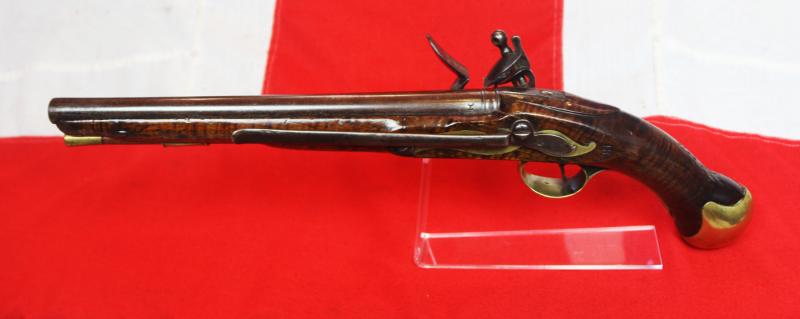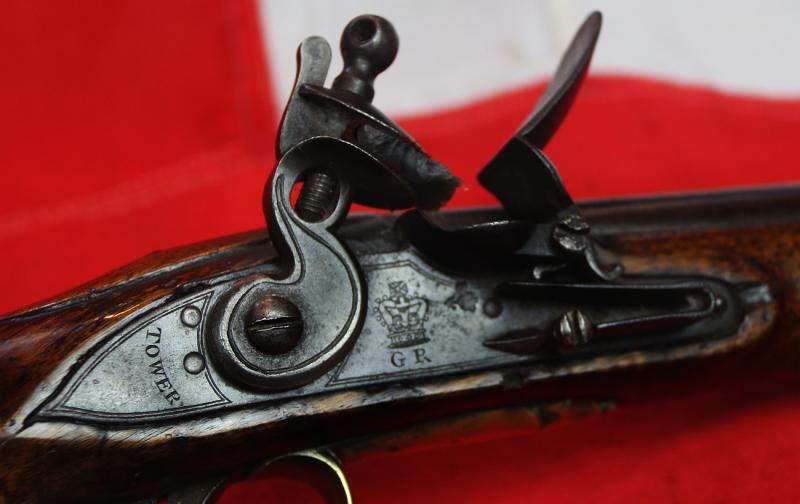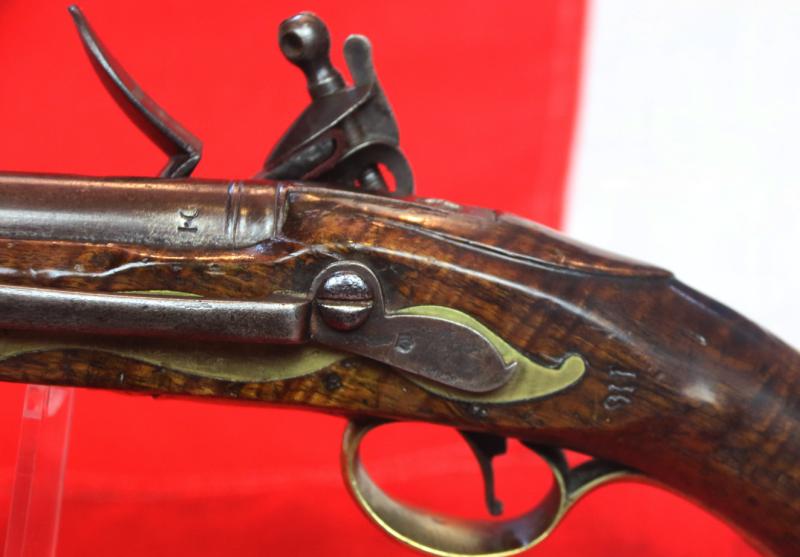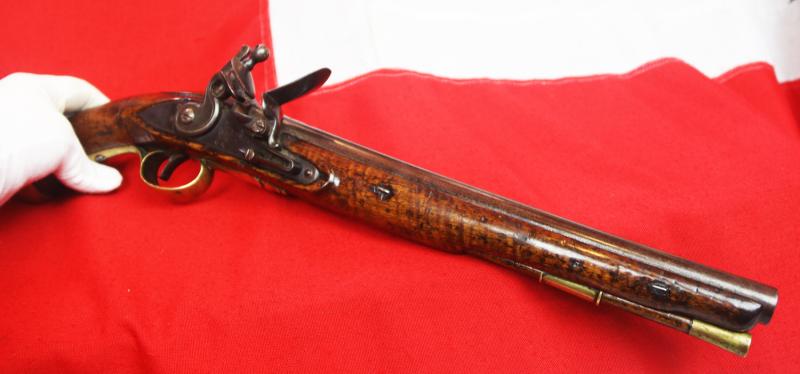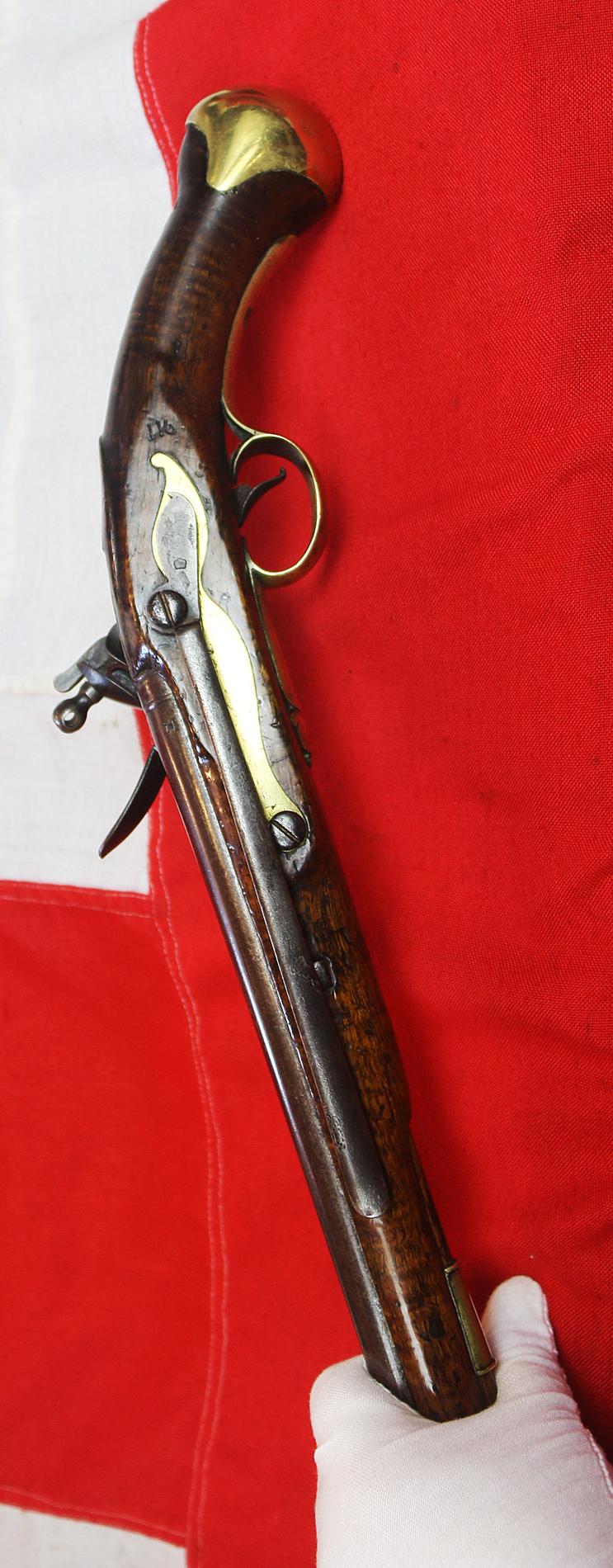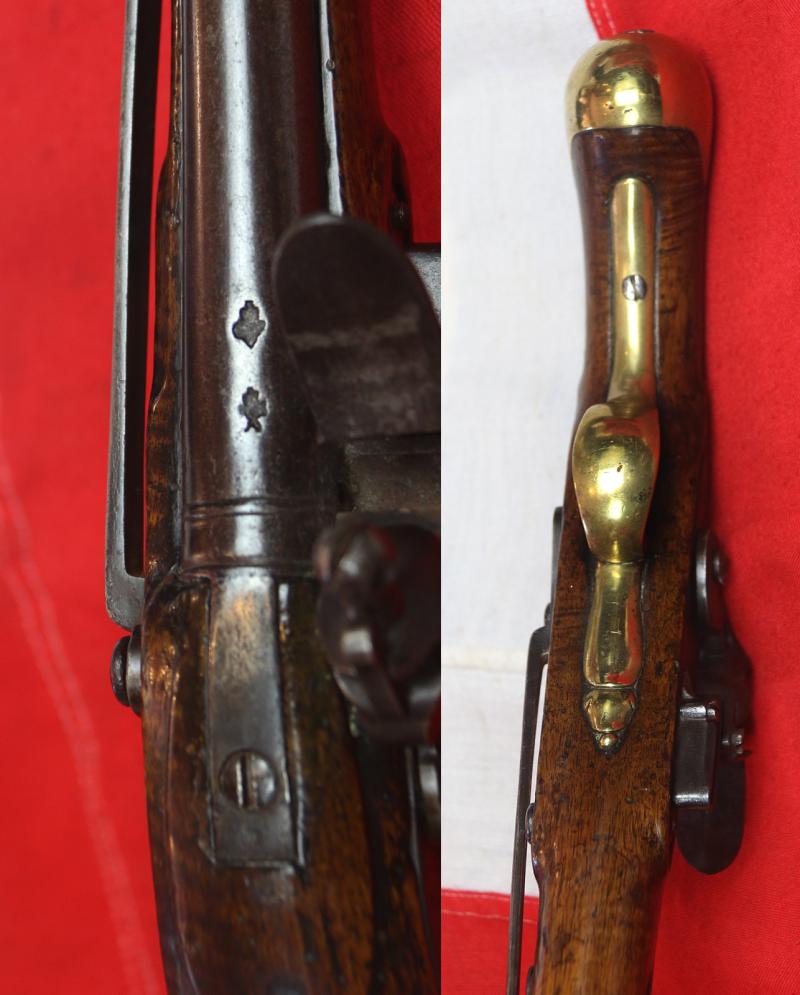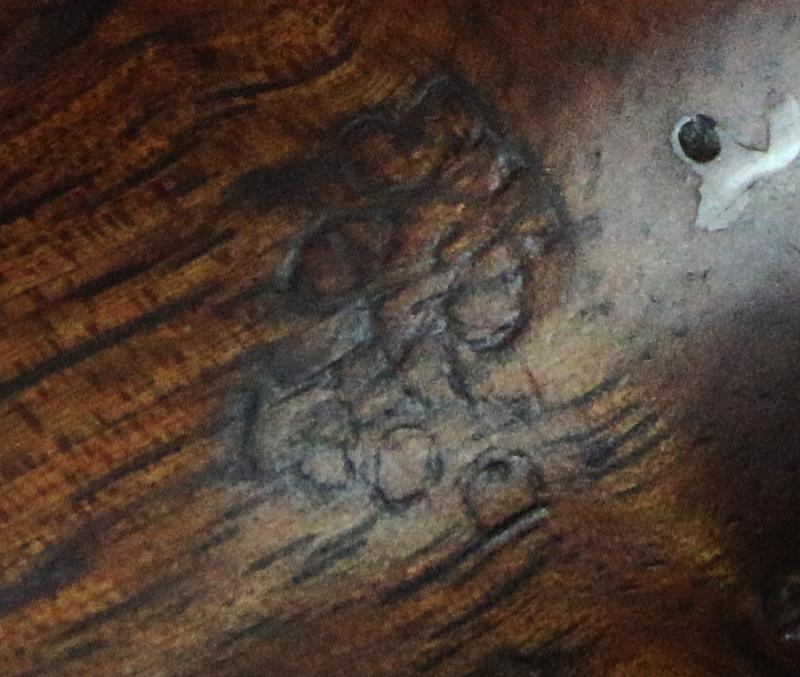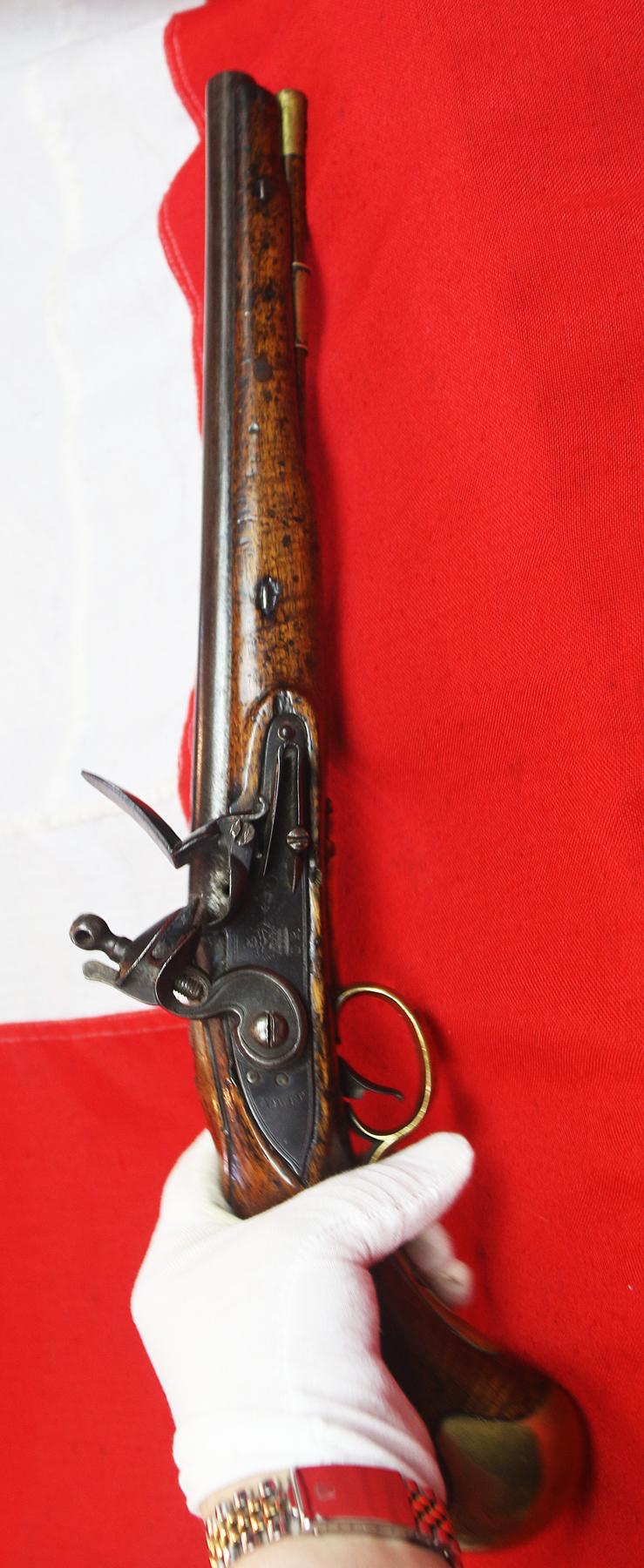An Exemplary 1777 Pattern Tower of London, Royal Navy Sea-Service Flintlock Pistol Dated 1800. From Admiral Lord Nelson's Navy. With Long 12 inch Barrel. Equal To & Likely Better Than The Best Surviving Examples In The National Maritime Museum Collection
Fantastic patina to the stock. The King George IIIrd issue British Royal Naval Sea Service pistol has always been the most desirable and valuable pistol sought by collectors, but this example, like our last other 1805 sea service pistol, is truly exceptional.
Exactly as issued and used by all the British Ship's-of-the-Line, at the Battle of Trafalgar in 1805. {although this pistol would have seen five years of service before Trafalgar.}
Finest walnut stock with wondrous patination, Tower of London engraved lock with GR Crown, long belt hook with ordnance crown stamp, all traditional brass furniture, skull-crusher butt, crown ordnance stamped trigger guard, very good steel, patinated barrel with centre position at the breech, proof stamps.
Ships that used this pistol at Trafalgar, such as;
HMS Victory,
HMS Temeraire,
HMS Dreadnought,
HMS Revenge,
HMS Agamemnon,
HMS Colossus
HMS Leviathan &
HMS Achilles.
Some of the most magnificent ships, manned by the finest crews, that have ever sailed the seven seas.
Battle of Trafalgar, (October 21, 1805), naval engagement of the Napoleonic Wars, which established British naval supremacy for more than 100 years; it was fought west of Cape Trafalgar, Spain, between Cádiz and the Strait of Gibraltar. A fleet of 33 ships (18 French and 15 Spanish) under Admiral Pierre de Villeneuve fought a British fleet of 27 ships under Admiral Horatio Nelson.
At the end of September 1805, Villeneuve had received orders to leave Cádiz and land troops at Naples to support the French campaign in southern Italy. On October 19–20 his fleet slipped out of Cádiz, hoping to get into the Mediterranean Sea without giving battle. Nelson caught him off Cape Trafalgar on October 21.
Villeneuve ordered his fleet to form a single line heading north, and Nelson ordered his fleet to form two squadrons and attack Villeneuve’s line from the west, at right angles. By noon the larger squadron, led by Admiral Cuthbert Collingwood in the Royal Sovereign, had engaged the rear (south) 16 ships of the French-Spanish line. At 11:50 AM Nelson, in the Victory, signaled his famous message: “England expects that every man will do his duty.” Then his squadron, with 12 ships, attacked the van and centre of Villeneuve’s line, which included Villeneuve in the Bucentaure. The majority of Nelson’s squadron broke through and shattered Villeneuve’s lines in the pell-mell battle. Six of the leading French and Spanish ships, under Admiral Pierre Dumanoir, were ignored in the first attack and about 3:30 PM were able to turn about to aid those behind. But Dumanoir’s weak counterattack failed and was driven off. Collingwood completed the destruction of the rear, and the battle ended about 5:00 PM. Villeneuve himself was captured, and his fleet lost 19 or 20 ships—which were surrendered to the British—and 14,000 men, of whom half were prisoners of war. Nelson was mortally wounded by a sniper, but when he died at 4:30 PM he was certain of his complete victory. About 1,500 British seamen were killed or wounded, but no British ships were lost. Trafalgar shattered forever Napoleon’s plans to invade England.
Obviously this arm has signs of combat use and the stock has very minor dings. But when taken into consideration its service use, it is of little consequence compared to it's fabulous condition, which is truly exceptional, with, incredibly, absolutely not a trace of rust or corrosion on the more usually heavily pitted, steel, lock and barrel. A steel belt hook was attached to the reverse of the pistol by the rear most lock mounting screw, and a stud at the inboard rear of the hook engaged a hole in the side plate to keep the belt hook from swiveling when in use. A recurved iron trigger was suspended from a single iron wire pin that passed through the stock and into the lock mortise. A simple, brass-tipped wooden rammer secured under the stock by the ramrod pipe
It still has it's original 12" barrel, which is very scarce as the barrels were shortened by official order, to 9", before the Napoleonic wars.
The first pattern date applied to the Sea Service pistol in this form is 1716. The Pattern 1716 Sea Service Pistol was very similar to the Land Service Pistol of the same era, in overall appearance and design. The pistol was a single shot, flintlock ignition gun with a 12” long, round iron smoothbore barrel in “pistol bore”, approximately .56 caliber. The guns were of simple, but robust construction, and like their land service brethren were built with an eye towards the gun seeing equal service as a club, as it did as a firearm! In fact, US Naval manuals from the first decades of the 1800s included instruction on how to throw the pistol at an enemy, a tactic that no doubt originated in the Royal Navy.
Code: 25296


